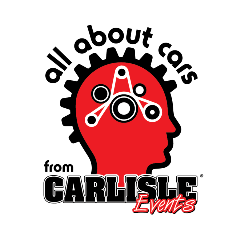
Chrysler’s High Impact Colors: Old-School automotive artistry still plays today
In 1909, Henry Ford was quoted as saying about the Model T, “Any customer can have a car painted any color that he wants, so long as it is black.” When the quote was delivered, the Model T only came in black because the production line required compromise so that efficiency and improved quality could be achieved.
But for many car enthusiasts then and now, while black can be dynamic, cool colors really speak to and attract crowds of fans. Car color has been a topic of discussion since the beginning of the automobile and while some early cars were unpainted, even what was arguably the first motor vehicle, the 1886 Benz Patent-Motorwagen, was green, with its fully exposed engine finished in bright red. By 1910, cars were offered in red, green, gray, and black, and even the Model T was sold in various colors.
By the 1920s, cream and tan were added to the color mix and the 1930s and 1940s saw metallic paints added. In the 1950s, two-tone paint jobs along with generous amounts of chrome set the tone. Car colors went bright in many shades of blue, red, green, gold, and turquoise, as well as white and black. One bright example was the Dodge “LaFemme,” a model marketed as a “women’s car” with pink paint, and special umbrella and lipstick holders.
The 1960s ushered in an era of self-expression and cars were in step as many sports cars and coupes featured more exuberant, less conventional shades of colors such as red, green, and blue. In addition, colors such as bright yellow, and violet found their first mainstream automotive applications during this decade. Power-plus muscle cars, such as the Plymouth Barracuda featured nontraditional colors.
The 1970s saw a greater popularity of “Earth tones,” which included shades of olive green, brown, and tan or cream, and colors were more restrained. Except that in the summer of 1969 and lasting into 1973, Chrysler’s Dodge and Plymouth motor divisions both began offering bright and vibrant paint colors -- known as Mopar High Impact Colors -- on their muscle car models. While competitors tried keeping up with Chrysler’s fresh new look with their own bold blends, their imitations couldn’t compete with Chrysler’s sharp new shades. These eye-popping paint colors had one purpose: attracting young buyers looking to make a statement with their muscle car.
Dodge categorized its paint colors as High-Performance Colors, while Plymouth labeled them High Impact Colors, but through time, both paint groups are often referred to as High Impact Colors. And in today’s world, some displays are called “Kool Colors” and “Old Skool Paint.”
Dodge and Plymouth both used different names for the same colors, however, they shared the same paint codes and isn’t uncommon for a paint color name from one motor division to incorrectly identify another motor division’s color name, as often car enthusiasts refer to the color of a Plymouth ‘Cuda as “Hemi Orange” when technically that was a name Dodge used.
Some of the most vibrant impact colors include:
Plum Crazy
In 1970 and 1971, Dodge labeled its regal purple paint color Plum Crazy while Plymouth used In Violet. It isn’t uncommon to hear car show folk refer to this color as Plum Crazy, regardless if it’s on a Charger or a Road Runner.
Hemi Orange
The Hemi Orange at Dodge or Tor Red at Plymouth was available from 1969 through 1972. Both Dodge and Plymouth eventually came to a consensus by using the term “Hemi Orange” to identify the color.
Bahama Yellow
From 1969 to 1971, a vibrant yellow was part of the Mopar color palette. Dodge called it Butterscotch while Plymouth named it Bahama Yellow.
Go Mango
In 1969 and 1970, a stunning EK2 orange paint color was available in two fruit-inspired names: Go-Mango at Dodge and Vitamin C at Plymouth.
Sublime Green
Dodge’s Sublime Green and Plymouth’s Limelight was a toxic yellow-green color available exclusively in 1970. It was one of the most radical and flamboyant High Impact colors ever offered.
Pink Panther
One of the most vivid and polarizing Mopar colors ever was the Pink FM3 paint code available in the spring of 1970 and as a special-order option in 1971. At the time, some dealers repainted their cars because they didn’t think Pink would sell. Dodge named it Pink Panther, as a take on Peter Sellers’ 1963 Pink Panther movie. Plymouth opted for Moulin Rouge, referring to the infamous cabaret in Paris, France.
Other High Impact colors include:
Top Banana in Dodge -- Lemon Twist in Plymouth; Citron Yella in Dodge -- Curious Yellow in Plymouth; Green Go in Dodge -- Sassy Grass Green in Plymouth; Bright Green in Dodge – Rallye Green in Plymouth.
Carlisle Events pays homage to “Old Skool” paint at the 2021 Carlisle Chrysler Nationals July 9 - 11, at the Carlisle (PA) Fairgrounds. Featuring retro colors, flake and original as well as recent paint artistry, the display brings the visitor back in time to psychedelic paintjobs.
Ed Buczeskie, Carlisle Chrysler Nationals Events Manager said, “Our display reflects the custom style of a bygone era. What’s so cool about it is that some of these cars actually survived with the same paint for 50 +/- years. That allows us to see exactly how they looked back in the day. On the other side of the coin are the modern painters such as Travis Hess, who can replicate that style, but with modern materials and arguably better quality, as the standards are higher now.”
Buczeskie points to a few colors as the extreme kings of the day. “Panther Pink (Dodge) and Moulin Rouge (Plymouth) was possibly the wildest factory color ever. Also, the 1971 ‘Cuda “billboard’ stripe was pretty wild. So, while Chrysler had (and still has) some wild colors, the concept was and is about the personalization from the owners and custom painters.”
The old school (or old “skool”) paint still plays today, and Buczeskie said it is about two things. “One is that it’s very different and people like different – especially now that we’ve all seen every possible factory combination. The other is nostalgia. Most of these cars were lost to time. They were rare enough in the Chrysler world back in the day and even fewer remain today.”
Factory paint is the focus here, but old-school artists such as George Barris did extreme customization then, and this year’s show displays one of today’s artists who employs an old-school vibe – Travis Hess. Buczeskie said, “Travis Hess is one of the best custom painters around today, who creates old-school artistry. And he’s a Mopar guy – as is his dad, Bucky Hess. At least two of the cars in the display were painted by Travis Hess. One is the ’64 Dodge that he owns and the other is the ’71 Charger of John McCabe. Hess’ ‘High Anxiety’ 1964 Dodge 440 Race Hemi hardtop is a stunning NHRA Stock Eliminator car that made its debut in 2016. McCabe’s ’71 Charger is also being replicated as a collectible die-cast for the event by M2 Machines. McCabe is also an amazing custom painter, but he chose Hess for the Charger. Another standout is the ’70 ‘Cuda of Tommy Baker. Baker is not a custom painter by trade, but he did his car himself and it’s AMAZING.”
Buczeskie added, “All the cars on display were standouts then and are standouts now.”
Visit www.CarlisleEvents.com for more on the automotive hobby.
Mike Blake, former editor of KIT CAR magazine, joined Carlisle Events as senior automotive journalist in 2004. He's been a "car guy" since the 1960s and has been writing professionally for about 30 years.
But for many car enthusiasts then and now, while black can be dynamic, cool colors really speak to and attract crowds of fans. Car color has been a topic of discussion since the beginning of the automobile and while some early cars were unpainted, even what was arguably the first motor vehicle, the 1886 Benz Patent-Motorwagen, was green, with its fully exposed engine finished in bright red. By 1910, cars were offered in red, green, gray, and black, and even the Model T was sold in various colors.
By the 1920s, cream and tan were added to the color mix and the 1930s and 1940s saw metallic paints added. In the 1950s, two-tone paint jobs along with generous amounts of chrome set the tone. Car colors went bright in many shades of blue, red, green, gold, and turquoise, as well as white and black. One bright example was the Dodge “LaFemme,” a model marketed as a “women’s car” with pink paint, and special umbrella and lipstick holders.
The 1960s ushered in an era of self-expression and cars were in step as many sports cars and coupes featured more exuberant, less conventional shades of colors such as red, green, and blue. In addition, colors such as bright yellow, and violet found their first mainstream automotive applications during this decade. Power-plus muscle cars, such as the Plymouth Barracuda featured nontraditional colors.
The 1970s saw a greater popularity of “Earth tones,” which included shades of olive green, brown, and tan or cream, and colors were more restrained. Except that in the summer of 1969 and lasting into 1973, Chrysler’s Dodge and Plymouth motor divisions both began offering bright and vibrant paint colors -- known as Mopar High Impact Colors -- on their muscle car models. While competitors tried keeping up with Chrysler’s fresh new look with their own bold blends, their imitations couldn’t compete with Chrysler’s sharp new shades. These eye-popping paint colors had one purpose: attracting young buyers looking to make a statement with their muscle car.
Dodge categorized its paint colors as High-Performance Colors, while Plymouth labeled them High Impact Colors, but through time, both paint groups are often referred to as High Impact Colors. And in today’s world, some displays are called “Kool Colors” and “Old Skool Paint.”
Dodge and Plymouth both used different names for the same colors, however, they shared the same paint codes and isn’t uncommon for a paint color name from one motor division to incorrectly identify another motor division’s color name, as often car enthusiasts refer to the color of a Plymouth ‘Cuda as “Hemi Orange” when technically that was a name Dodge used.
Some of the most vibrant impact colors include:
Plum Crazy
In 1970 and 1971, Dodge labeled its regal purple paint color Plum Crazy while Plymouth used In Violet. It isn’t uncommon to hear car show folk refer to this color as Plum Crazy, regardless if it’s on a Charger or a Road Runner.
Hemi Orange
The Hemi Orange at Dodge or Tor Red at Plymouth was available from 1969 through 1972. Both Dodge and Plymouth eventually came to a consensus by using the term “Hemi Orange” to identify the color.
Bahama Yellow
From 1969 to 1971, a vibrant yellow was part of the Mopar color palette. Dodge called it Butterscotch while Plymouth named it Bahama Yellow.
Go Mango
In 1969 and 1970, a stunning EK2 orange paint color was available in two fruit-inspired names: Go-Mango at Dodge and Vitamin C at Plymouth.
Sublime Green
Dodge’s Sublime Green and Plymouth’s Limelight was a toxic yellow-green color available exclusively in 1970. It was one of the most radical and flamboyant High Impact colors ever offered.
Pink Panther
One of the most vivid and polarizing Mopar colors ever was the Pink FM3 paint code available in the spring of 1970 and as a special-order option in 1971. At the time, some dealers repainted their cars because they didn’t think Pink would sell. Dodge named it Pink Panther, as a take on Peter Sellers’ 1963 Pink Panther movie. Plymouth opted for Moulin Rouge, referring to the infamous cabaret in Paris, France.
Other High Impact colors include:
Top Banana in Dodge -- Lemon Twist in Plymouth; Citron Yella in Dodge -- Curious Yellow in Plymouth; Green Go in Dodge -- Sassy Grass Green in Plymouth; Bright Green in Dodge – Rallye Green in Plymouth.
Carlisle Events pays homage to “Old Skool” paint at the 2021 Carlisle Chrysler Nationals July 9 - 11, at the Carlisle (PA) Fairgrounds. Featuring retro colors, flake and original as well as recent paint artistry, the display brings the visitor back in time to psychedelic paintjobs.
Ed Buczeskie, Carlisle Chrysler Nationals Events Manager said, “Our display reflects the custom style of a bygone era. What’s so cool about it is that some of these cars actually survived with the same paint for 50 +/- years. That allows us to see exactly how they looked back in the day. On the other side of the coin are the modern painters such as Travis Hess, who can replicate that style, but with modern materials and arguably better quality, as the standards are higher now.”
Buczeskie points to a few colors as the extreme kings of the day. “Panther Pink (Dodge) and Moulin Rouge (Plymouth) was possibly the wildest factory color ever. Also, the 1971 ‘Cuda “billboard’ stripe was pretty wild. So, while Chrysler had (and still has) some wild colors, the concept was and is about the personalization from the owners and custom painters.”
The old school (or old “skool”) paint still plays today, and Buczeskie said it is about two things. “One is that it’s very different and people like different – especially now that we’ve all seen every possible factory combination. The other is nostalgia. Most of these cars were lost to time. They were rare enough in the Chrysler world back in the day and even fewer remain today.”
Factory paint is the focus here, but old-school artists such as George Barris did extreme customization then, and this year’s show displays one of today’s artists who employs an old-school vibe – Travis Hess. Buczeskie said, “Travis Hess is one of the best custom painters around today, who creates old-school artistry. And he’s a Mopar guy – as is his dad, Bucky Hess. At least two of the cars in the display were painted by Travis Hess. One is the ’64 Dodge that he owns and the other is the ’71 Charger of John McCabe. Hess’ ‘High Anxiety’ 1964 Dodge 440 Race Hemi hardtop is a stunning NHRA Stock Eliminator car that made its debut in 2016. McCabe’s ’71 Charger is also being replicated as a collectible die-cast for the event by M2 Machines. McCabe is also an amazing custom painter, but he chose Hess for the Charger. Another standout is the ’70 ‘Cuda of Tommy Baker. Baker is not a custom painter by trade, but he did his car himself and it’s AMAZING.”
Buczeskie added, “All the cars on display were standouts then and are standouts now.”
Visit www.CarlisleEvents.com for more on the automotive hobby.
Mike Blake, former editor of KIT CAR magazine, joined Carlisle Events as senior automotive journalist in 2004. He's been a "car guy" since the 1960s and has been writing professionally for about 30 years.
Book with a preferred Hotel
Book online or call (800) 216-1876




.png?sfvrsn=8cce4cd8_2)




Leave a commentOrder by
Newest on top Oldest on top